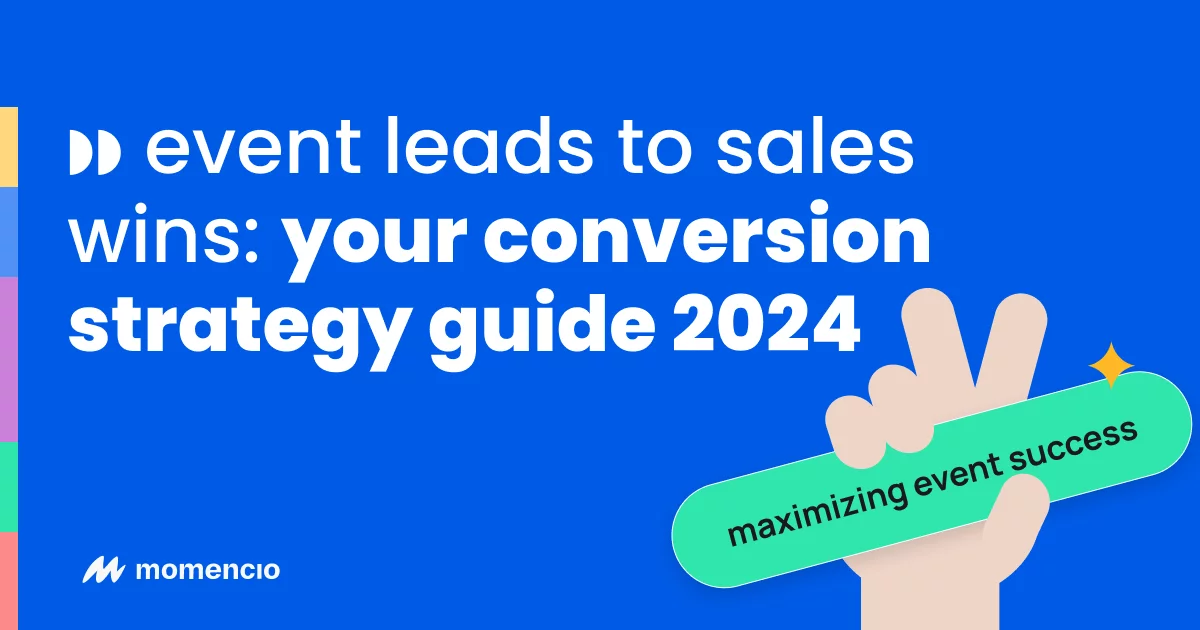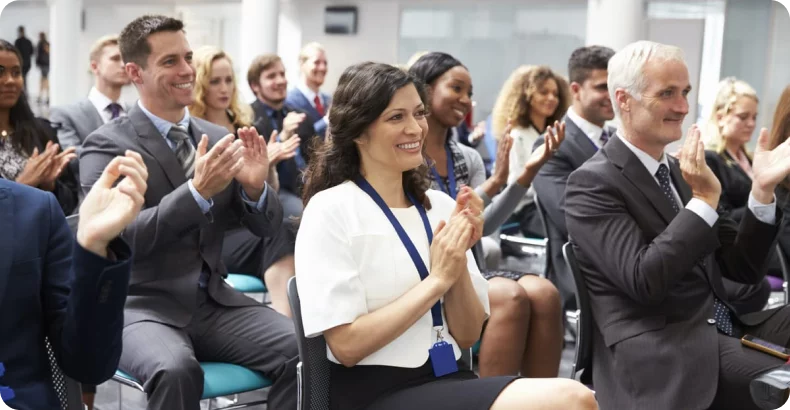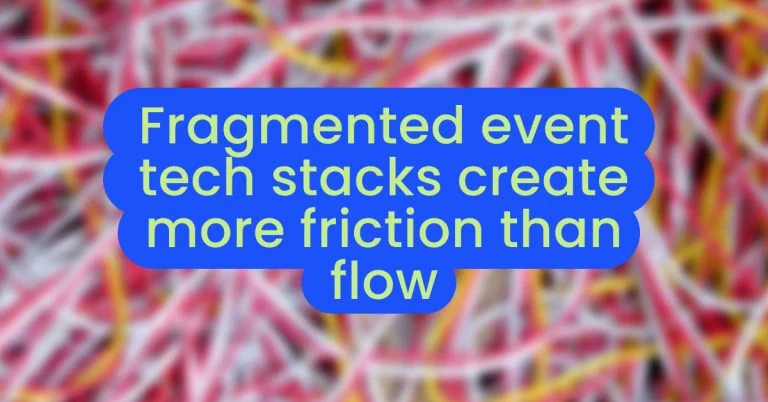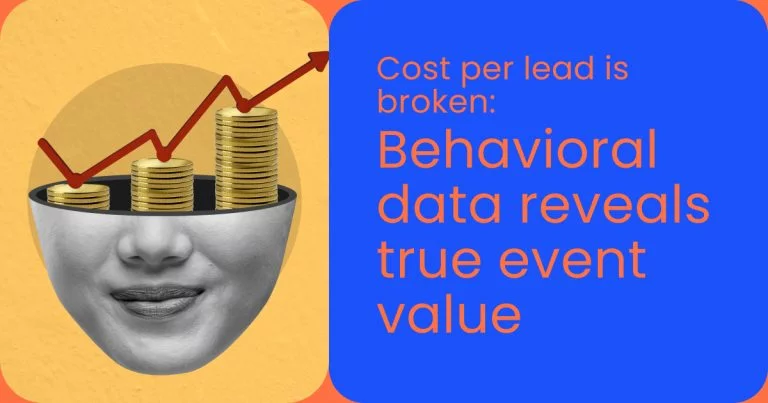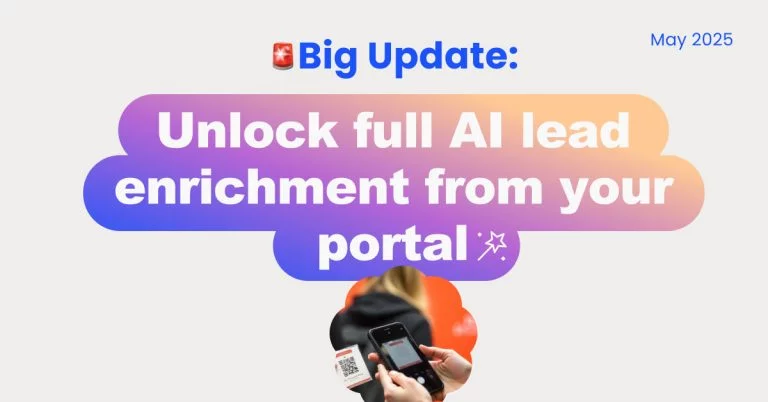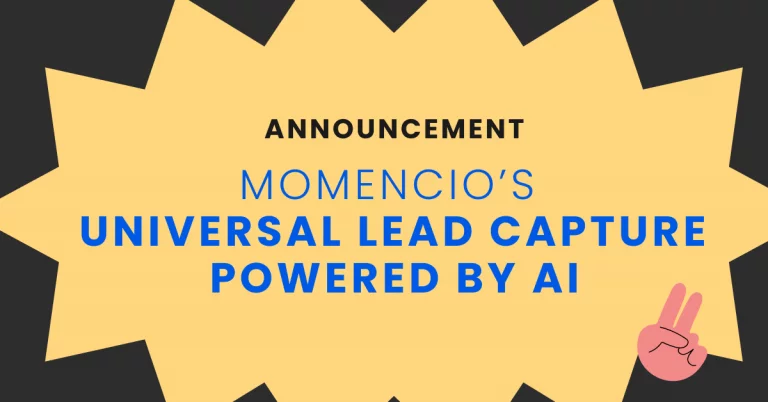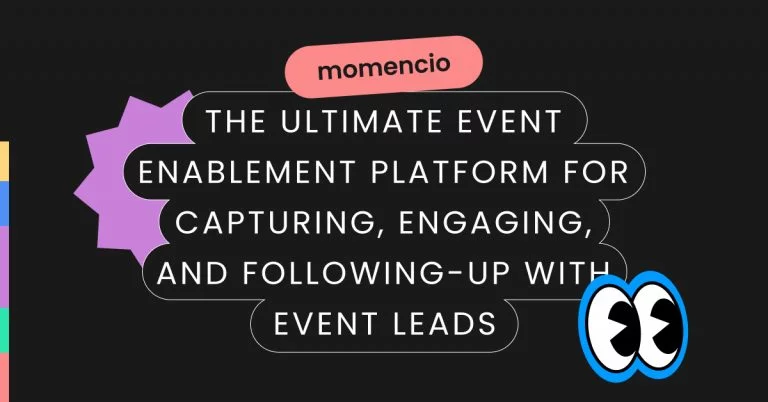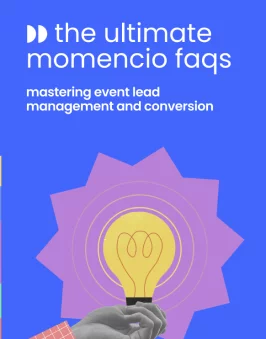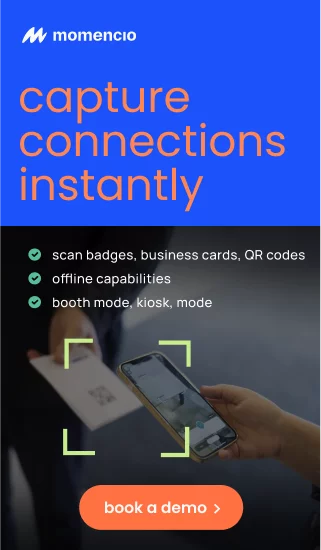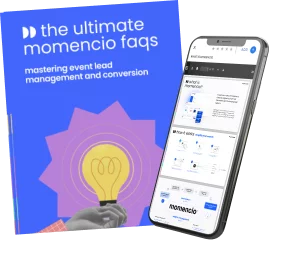Introduction
The art of converting event leads into sales is more than just gathering contact details; it’s about creating relationships that lead to profitable outcomes. The process of turning an event lead into a sale is multifaceted. It involves understanding who your leads are, nurturing them with the proper communication, aligning your marketing and sales efforts, and critically analyzing the results of your strategies. Throughout this guide, we’ll explore each of these aspects, offering practical advice and insights to help you improve your lead conversion rates.
This guide is designed for both experienced event marketers and those new to the field. Our main goal is to offer valuable insights and straightforward tips to enhance your approach to event lead conversion. Let’s get started on improving your strategies for turning event leads into successful sales.
In the dynamic landscape of event marketing, converting event leads into sales is the linchpin of success. The journey from meeting a potential customer at an event to closing a sale is intricate, demanding a nuanced understanding of lead management and nurturing.
Understanding your event Leads
The first step in converting event leads into sales is understanding who your leads are. Not all leads are created equal, and recognizing the high-potential ones is crucial. High-value leads typically exhibit specific characteristics such as decision-making authority, a clear need for your product or service, and a readiness to purchase in the near future. Identifying these leads requires a combination of keen observation during the event and post-event analysis.
However, it’s not just about identifying suitable leads; it’s also about understanding them. This understanding encompasses knowing their business challenges, their industry trends, and their motivations. For instance, a lead working in the technology sector might be more interested in the technical capabilities of your product. A lead from the retail industry might focus more on customer experience enhancements.
Tailoring your approach to different lead types
Once you have identified and understood your leads, the next step is tailoring your approach to suit different types of leads. Not all event leads should be approached in the same manner. For instance, a lead who showed great interest in your product at the event might respond well to a direct sales pitch, while a more passive lead might require nurturing with informative content and gradual engagement.
This tailored approach can be effectively implemented by segmenting your leads based on their behaviors and interests. Segmentation allows you to create personalized communication strategies for different groups, increasing the relevance and effectiveness of your follow-up efforts.
Strategies for effective lead nurturing
Event lead nurturing is a critical component in the lead-to-sale conversion process. It involves building a relationship with your event leads, providing them with valuable information with your digital collateral, and gradually guiding them toward making a purchase decision. Effective lead nurturing strategies include:
- Personalized communication: Personalization goes beyond addressing leads by their name. It involves following up with messages that resonate with their specific business needs, interests, and pain points. This can be achieved by utilizing the information gathered during the event and in post-event follow-ups.
- Timely and relevant follow-up: Timing is critical in lead nurturing. Follow up with your event leads while the event is still fresh in their minds. A prompt follow-up demonstrates your interest and commitment to addressing their needs. The follow-up should be relevant, providing information or solutions that are aligned with what you discussed during the event.
- Utilizing digital tools for engagement: In today’s digital age, using tools such as email marketing, social media, and CRM software can significantly enhance your lead nurturing efforts. These tools can help automate and track your interactions, providing insights into the effectiveness of your strategies and the preferences of your leads.
Integrating sales and marketing efforts
The alignment of sales and marketing teams after an event is critical in the lead conversion process and maximizes event ROI. A cohesive event strategy ensures that both teams are working towards the same goal with a clear understanding of their respective roles in nurturing and closing leads.
- Team alignment for a unified strategy: Regular communication between sales and marketing teams is essential. This can be facilitated through joint meetings, shared goals, and mutual KPIs. For example, both teams should agree on what constitutes a qualified lead and the steps involved in nurturing these event leads through the sales funnel.
- Leveraging CRM and marketing automation: Utilizing Customer Relationship Management (CRM) and marketing automation tools can significantly enhance the alignment between sales and marketing. These tools provide a unified platform where both teams can track the progress of leads, share insights, and automate certain aspects of the lead nurturing process. This integration ensures a seamless transition of leads from marketing to sales, enhancing the efficiency and effectiveness of the conversion process.
Measuring and analyzing lead conversion success
To continuously improve your lead-to-sales conversion process, it’s essential to measure and analyze your efforts. This involves tracking key metrics and using the insights gained for future strategy optimization.
- Key metrics to track: Several metrics are crucial in evaluating the success of your lead conversion strategies. These include the lead conversion rate, the average time taken to convert leads into sales, and the return on investment (ROI) of your event marketing efforts. Additionally, tracking engagement metrics such as email open rates, click-through rates, and social media interactions can provide valuable insights into how leads are interacting with your nurturing efforts.
- Continuous improvement and optimization: The data collected through these metrics should be used to refine your strategies continually. Analyze which tactics are working and which are not. For instance, if certain email content is generating higher engagement, use these insights to tailor future communications. Similarly, feedback from the sales team on lead quality can help marketing adjust its qualification criteria and targeting strategies.
Advanced techniques for higher conversion
In the pursuit of higher conversion rates, incorporating advanced techniques can provide a competitive edge.
- Utilizing AI and data analytics: Artificial Intelligence (AI) and data analytics can significantly enhance lead scoring and prioritization.
- Creating engaging post-event experiences: The period immediately following an event is crucial for lead nurturing. Creating engaging post-event experiences can keep your brand at the forefront of event leads’ minds. This could include virtual follow-up events, interactive digital content, or personalized offers based on the lead’s interests shown during the event.
Overcoming common obstacles in lead conversion
- Handling lead overwhelm: After a large event, the sheer volume of leads can be overwhelming. Prioritization is key here. Use lead scoring to identify high-potential leads and focus your initial efforts on these.
- Addressing post-event engagement challenges: Maintaining engagement after an event can be challenging. Regular, value-added communication is vital. Ensure that your content is informative, addresses the lead’s needs, and keeps your brand relevant in their decision-making process.
As we wrap up our comprehensive guide on converting event leads into sales, let’s address some common questions that might arise in this process. These FAQs aim to clarify any lingering doubts and provide succinct, practical advice.
FAQs
- How quickly should I follow up with event leads after an event?
- Ideally, follow up within the next few hours after the event. This timeframe ensures that the interaction is still fresh in the lead’s mind, increasing the likelihood of a positive response.
- What’s the best way to personalize communication with leads?
- Use the information gathered at the event (like specific interests, challenges, or comments they made) to tailor your communication. Referencing a shared experience or discussion point from the event can also add a personal touch.
- How can I measure the effectiveness of my lead nurturing campaigns?
- Track metrics like engagement email open rates, click-through rates, conversion rates, and, ultimately, the sales generated from nurtured leads. These indicators will help you understand the effectiveness of your campaigns.
- What role does CRM play in converting event leads into sales?
- CRM systems help organize and track interactions with leads, ensure timely follow-ups, and provide insights into lead behavior, which are crucial for tailoring sales strategies.
- How can I keep the sales team motivated to pursue event leads?
- Regularly share the success stories of converted leads and the impact on sales. Incentivizing successful conversions can also be an excellent motivator for the sales team.
Having explored the essential strategies for converting event leads into sales, the final piece of the puzzle lies in selecting the right tools to implement these strategies effectively. This is where momencio steps in as a game-changer for your event marketing and lead management process.
momencio is not just a tool; it’s your partner in transforming event leads into successful sales. With its advanced features like real-time lead scoring, AI-powered insights, and seamless CRM integration, momencio elevates your lead management to a new level of efficiency and effectiveness.
Why choose momencio for your lead conversion journey?
- Streamlined lead management: momencio simplifies the process of capturing and nurturing leads, offering a one-stop solution for all your event marketing needs.
- Real-time insights: Stay ahead with real-time analytics and lead scoring, enabling you to make informed decisions swiftly.
- Enhanced lead engagement: With momencio’s personalized communication tools and automated follow-up capabilities, engage your leads more effectively than ever before.
- Seamless CRM integration: momencio integrates flawlessly with your existing CRM systems, ensuring a cohesive flow of information and strategies across your sales and marketing teams.
- Data-driven decisions: Leverage the power of event data analytics to fine-tune your strategies, ensuring your efforts are always aligned with the highest potential for conversion.
Your next steps with momencio
It’s time to take action and revolutionize how you handle event leads. Start by exploring momencio’s features and understanding how it can fit into your current sales and marketing strategy.
Implement momencio in your next event and watch as it streamlines your lead capturing, enriches lead data, and provides the insights you need to convert leads into sales effectively.
Start your journey today towards more efficient lead management and increased sales conversions with momencio. Schedule a demo.
